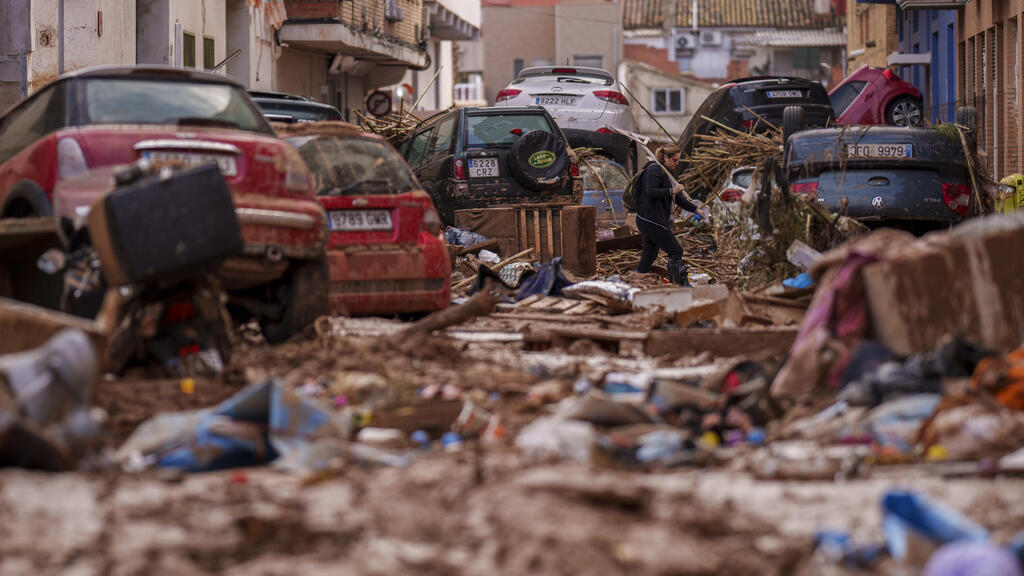Getting your Trinity Audio player ready...
Countries across Central and Eastern Europe faced the devastating effects of Storm Boris in September, which claimed at least 27 lives in Romania, Poland, the Czech Republic, Germany, Hungary, and Italy. Rivers overflowed due to the severe storm, attributed to the climate crisis. Many regions recorded unprecedented rainfall over five days, which displaced numerous families and came with a heavy human toll.
Soon after, extreme weather struck Europe again, this time in eastern Spain. A powerful, isolated barometric low last month unleashed torrential rain and flooding, killing over 220 people and causing substantial property damage, marking the deadliest natural disaster in Spain's history. These unusual events sparked widespread public and political debate on whether climate change is to blame.
Valencia floods
(Video: Reuters)
A study published in Communications Earth & Environment by researchers at the Alfred Wegener Institute established a link between climate change and the occurrence of extreme weather events. “For the past few years, science has been able to provide robust answers to this absolutely legitimate question,” says lead author Dr Marylou Athanase, a physicist in the Climate Dynamics Section of the Alfred Wegener Institute, Helmholtz Centre for Polar and Marine Research (AWI). “As early as one or two weeks after a given event, so-called probabilistic attribution studies can be used to draw initial conclusions on how much more probable the event was, due to climate change.”
“That’s why we at the AWI have worked so hard to advance a totally new way – the ‘storyline’ approach,” explains Dr Antonio Sánchez-Benítez, a fellow physicist in the Climate Dynamics Section and co-lead author of the study. “Essentially, we apply the ‘what if?’ principle. What would a given catastrophe look like in a world without climate change? And what about in a climate that was even warmer? By comparing the hypothetical scenarios with the reality, we can then very clearly identify the fingerprints of climate change – and not just for extreme weather events, but also for day-to-day weather.”
Using Storm Boris as a case study, the researchers demonstrated their new method. Without global warming, they estimated that the destructive storm would have dropped about 9% less rainfall. In reality, as it moved from the Eastern Mediterranean and the Black Sea toward Central Europe, the storm intensified because water temperatures were approximately two degrees Celsius above pre-industrial levels. This warmth contributed to higher moisture levels in the air over the area, leading to exceptionally heavy rain and unprecedented flooding.
The researchers effectively connected climate model simulations, typically used for long-term trends, with real-world local weather. “One important aspect is what is known as ‘nudging’”, explains Dr Helge Gößling, a climate physicist and team lead of the storyline research at the AWI. “Climate models normally simulate a specific, quasi-random sequence of weather conditions, which is consistent with the laws of physics that their programming is based on. In order to identify differences in the climate, you need to see whether the mean values and distributions change, over a long period of time with a correspondingly large number of weather conditions."
"Likewise, in weather models the simulated conditions have very little to do with the reality after a few weeks; the actual weather can only be predicted to a limited extent. With the ‘nudging’, we provide the model with actually observed wind data, including phenomena like the jet stream, and we nudge the model a bit in the direction of the actually observed wind. In this way, we can accurately reproduce real weather in the real climate. Then we change the background climate of the model, for instance to a world untouched by climate change by reducing the greenhouse-gas concentrations and adjusting other aspects, and repeat the experiment.”
2 View gallery


Precipitation amounts from storm "Boris" from 12 to 16 September 2024
(Photo: Alfred Wegener Institute / Marylou Athanase)
The model they used is partially based on CMIP6, one of the foundations for the IPCC’s Sixth Assessment Report. Wind data for the model came from the ERA5, a global weather dataset compiling information from various atmospheric and ground sources since 1950, produced by the European Centre for Medium-Range Weather Forecasts. These data are fed into an online tool hosted on the servers of the Alfred Wegener Institute, with open access.
The CMIP6 version of the AWI climate model, which was also used in the IPCC’s Sixth Assessment Report, draws wind data from the ERA5 reanalysis by the European Centre for Medium-Range Weather Forecasts (ECMWF). “We have since automated the system to the point where daily analyses of current weather are run on the German Climate Computing Center (DKRZ) supercomputer,” says Marylou Athanase. Currently, only data on temperature and precipitation from 1 January 2024 onwards is available. Our goal is to promote understanding of climate change’s connection to extreme weather events and to supply concrete, timely insights for media use.”
Get the Ynetnews app on your smartphone:





